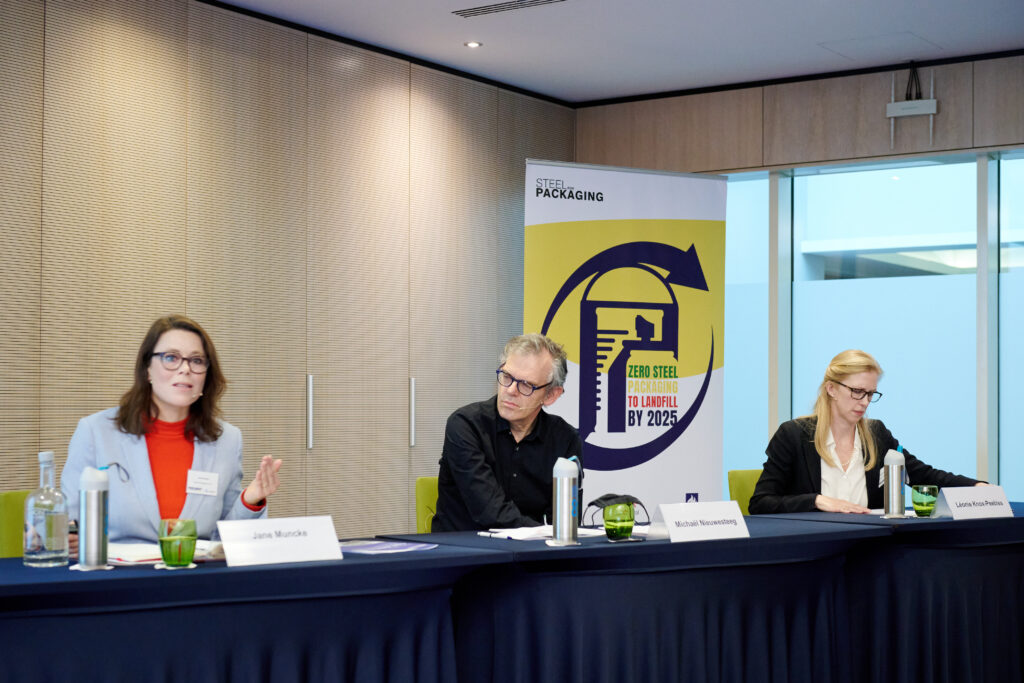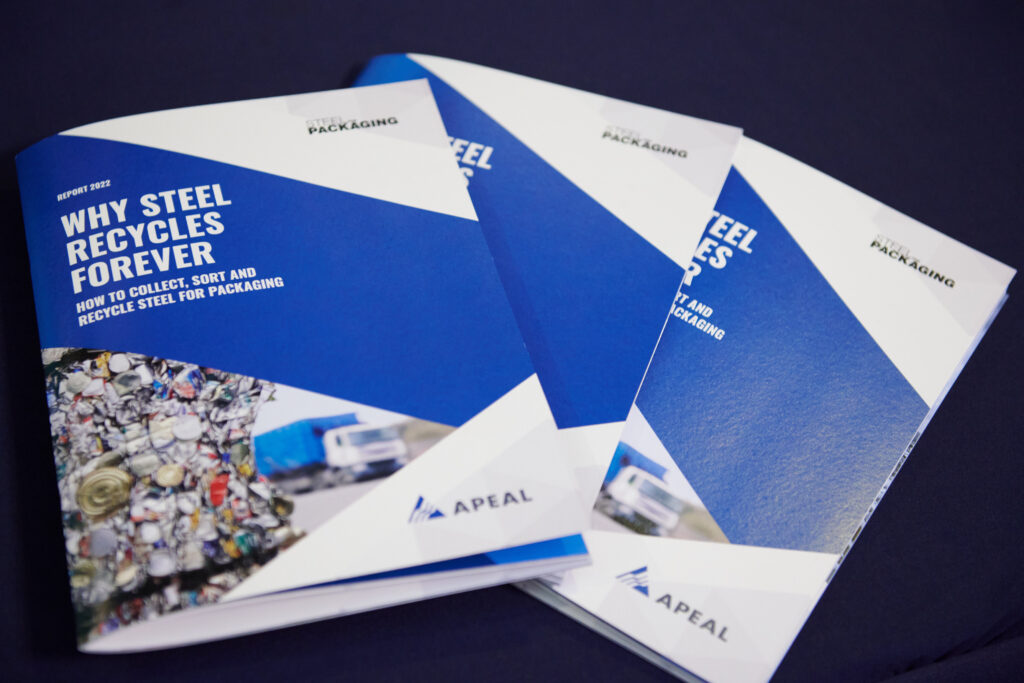#29.04.2022 THE IMPORTANCE OF DEFINING QUALITY STANDARDS FOR STEEL PACKAGING SCRAP
By Alexis Van Maercke
On 1st February during our conference From Vision to Reality; Closing the loop on steel packaging, we launched our new report How to recycle steel – Why steel packaging recycles forever.
The fifth of our six key recommendations in this report is to define quality requirements at each step of the collection, sorting and additional treatment phases before delivery of material to the recycling operation.
 Steel is a permanent material, meaning that it retains its physical properties despite repeated recycling into new steel products. How steel contributes to a more circular economy in Europe was the focus of our conference’s third and final panel debate bringing together Jane Muncke, Managing Director of the Food Packaging Forum, Léonie Knox-Peebles, CEO of Metal Packaging Europe and Michaël Nieuwesteeg of the NVC Netherlands Packaging Centre.
Steel is a permanent material, meaning that it retains its physical properties despite repeated recycling into new steel products. How steel contributes to a more circular economy in Europe was the focus of our conference’s third and final panel debate bringing together Jane Muncke, Managing Director of the Food Packaging Forum, Léonie Knox-Peebles, CEO of Metal Packaging Europe and Michaël Nieuwesteeg of the NVC Netherlands Packaging Centre.
Watch more in our highlights video here.
As steel is a permanent material that can be infinitely recycled, neither the collection nor the sorting processes have any impact on its inherent properties. However, those processes do have an impact on the quality and quantity of the collected and sorted steel scrap; not only at the output of the sorting facility, but also in follow-up treatment processes.
Steel recycling is ensured by the 500+ steel plants in Europe who use steel scrap in the manufacture of new steel products. High-quality recycling is only possible with high-quality input to recycling operations. Defining quality requirements at each step of the collection can help to ensure this high-quality input. The benefits of additional treatment phases and more rigorous sorting before the recycling operation are twofold; valuable steel isn’t lost, and contamination is reduced.
When collected together with other recyclable waste fractions, steel packaging can easily be separated using an overband magnetic separator at the sorting plant. However, it cannot be guaranteed that the steel packaging scrap bundle does not contain impurities. Labels and films could be attached to steel packaging, or other types of waste could be trapped inside steel packaging containers.
It is notable that when steel packaging is collected with a wide range of other packaging materials, the concentration of contaminants in steel bundles is higher. The more complex the collection stream, the more intensive the sorting needed. Ultimately, this reinforces APEAL’s belief that separate collection is truly the best solution for a more circular economy.
 A copy of the report can be downloaded here.
A copy of the report can be downloaded here.
